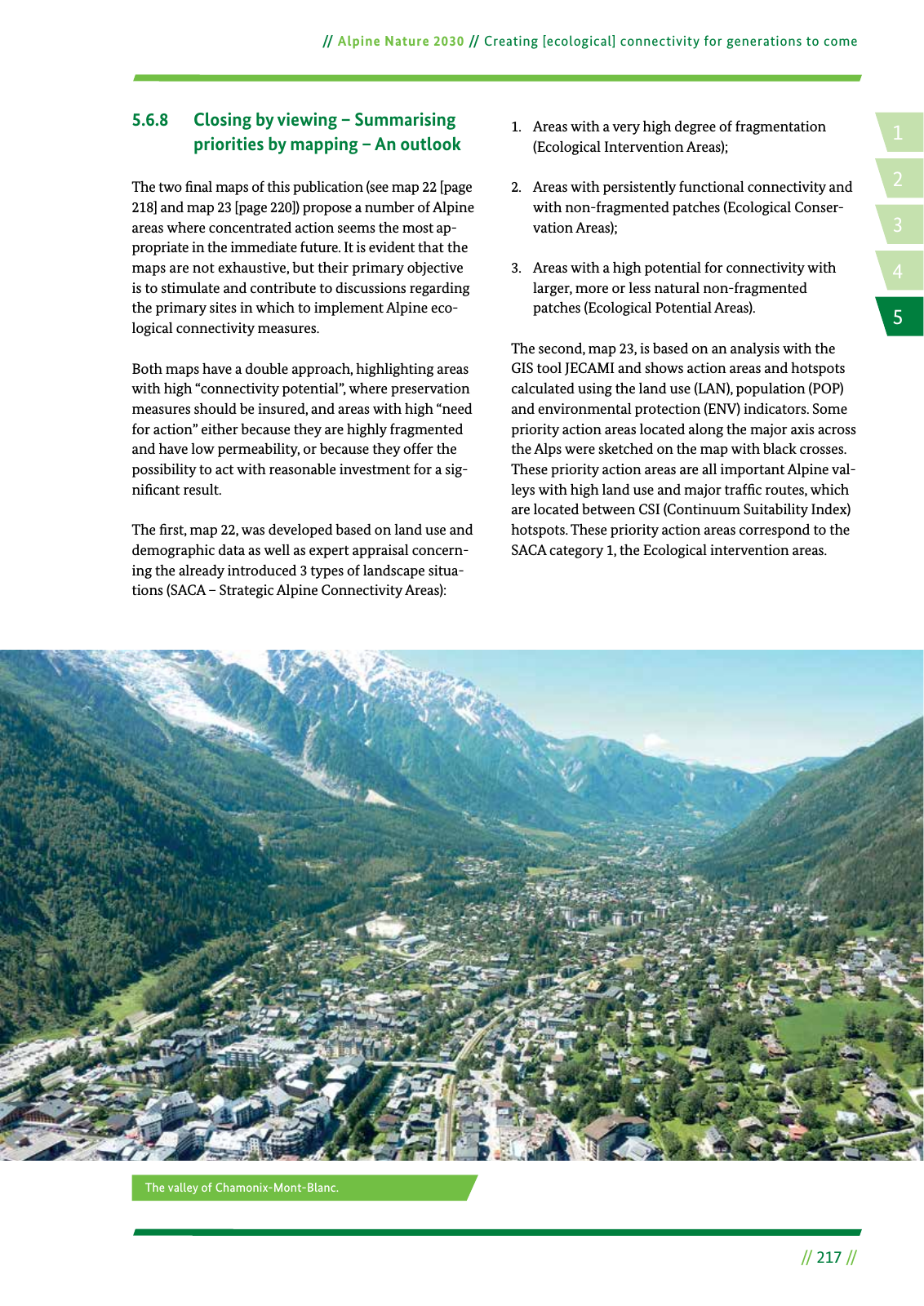14 2 5 3 Alpine Nature 2030 Creating ecological connectivity for generations to come 217 5 6 8 Closing by viewing Summarising priorities by mapping An outlook The two nal maps of this publication see map 22 page 218 and map 23 page 220 propose a number of Alpine areas where concentrated action seems the most ap propriate in the immediate future It is evident that the maps are not exhaustive but their primary objective is to stimulate and contribute to discussions regarding the primary sites in which to implement Alpine eco logical connectivity measures Both maps have a double approach highlighting areas with high connectivity potential where preservation measures should be insured and areas with high need for action either because they are highly fragmented and have low permeability or because they offer the possibility to act with reasonable investment for a sig ni cant result The rst map 22 was developed based on land use and demographic data as well as expert appraisal concern ing the already introduced 3 types of landscape situa tions SACA Strategic Alpine Connectivity Areas 1 Areas with a very high degree of fragmentation Ecological Intervention Areas 2 Areas with persistently functional connectivity and with non fragmented patches Ecological Conser vation Areas 3 Areas with a high potential for connectivity with larger more or less natural non fragmented patches Ecological Potential Areas The second map 23 is based on an analysis with the GIS tool JECAMI and shows action areas and hotspots calculated using the land use LAN population POP and environmental protection ENV indicators Some priority action areas located along the major axis across the Alps were sketched on the map with black crosses These priority action areas are all important Alpine val leys with high land use and major traf c routes which are located between CSI Continuum Suitability Index hotspots These priority action areas correspond to the SACA category 1 the Ecological intervention areas The valley of Chamonix Mont Blanc

Hinweis: Dies ist eine maschinenlesbare No-Flash Ansicht.
Klicken Sie hier um zur Online-Version zu gelangen.
Klicken Sie hier um zur Online-Version zu gelangen.